A warm welcome to all the London lovers and walking enthusiasts out there! My journey today will take me to the most Northern part of the capital that I’ve explored as I begin at Gladstone Park and uncover the gem of Dollis Hill House. I’ll then discover Woodfield Park and Brent Reservoir, before heading through Silver Jubilee Park and concluding at Fryent Country Park. It’s a walk which takes me to woodlands, a reservoir and a country park and sees me stroll through some of North London’s most wonderful sights.

Located in Dollis Hill, Gladstone Park is 35 hectares (86 acres) of picturesque trees and glorious greenery. The arrival of the Great Central Railway towards the end of the 19th century led to the loss of sports grounds in Neasden, which prompted the public to back a new park in Dollis Hill.



The proposed land to be used was part of the Finch family’s estate, and after local objection was resolved, funds were raised to purchase it for £52,000. The funds would come from a variety of councils, including Middlesex County Council, London County Council, Hampstead, Hendon and Willesden.


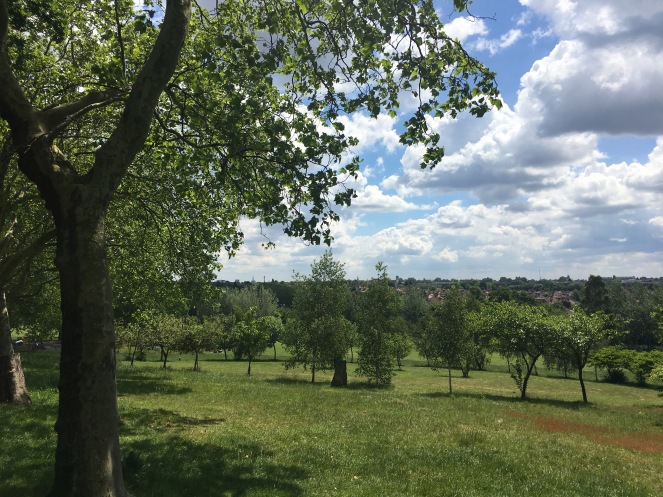
The contract to purchase the house, gardens and estate from Robert Augustus Finch was signed by the council on 9 August 1899. On 12 December 1899 it was agreed to name the park after William Ewart Gladstone, the Prime Minister who had died the previous year and who had visited the house for many years.



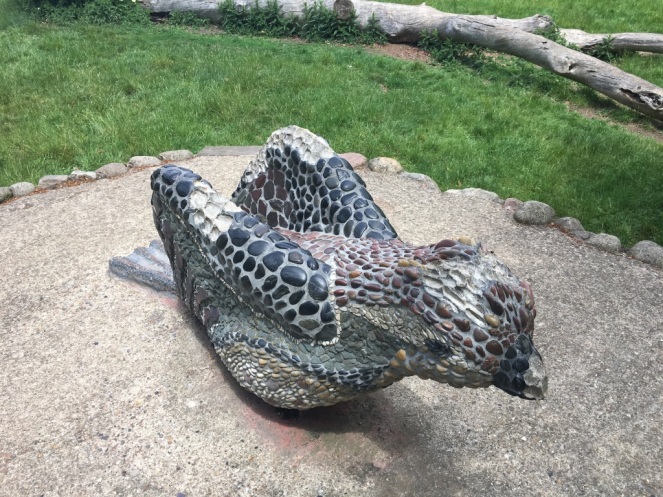
The park was designed by Oliver Claude Robson, the District Council Surveyor. It was decided to leave the northern part of the new park to its ‘original and natural beauty’, while devoting the southern section of the park to sports. Robson would also install fencing, a children’s playground, seats, stabling, pavilions for football and cricket, and a water supply. Interestingly no paths were created, instead these were added once the park was opened as Robson wanted people to mark out their own pathways.



Today the London Borough of Brent owns the park and is maintained by the Brent Parks Service. Some of the park’s features include a formal garden, duck pond, varied terrain, woodland and hedgerows.
The entire park area, especially the pleasure gardens and pond, really are one of London’s hidden gems, and whenever I walk around them basking in their natural splendour, I do think that had I not been a fan of walking around the capital, I’d never have come across it! Gladstone Park isn’t a tourist hotspot, nor is it somewhere that’s well-known, so unless you’ve visited it before, you’d probably never come across it. That’s a great shame and is one of the many reasons I love doing this blog as I can discover areas such as these. For a moment of peace and quiet, you’d definitely want to pay it a visit.

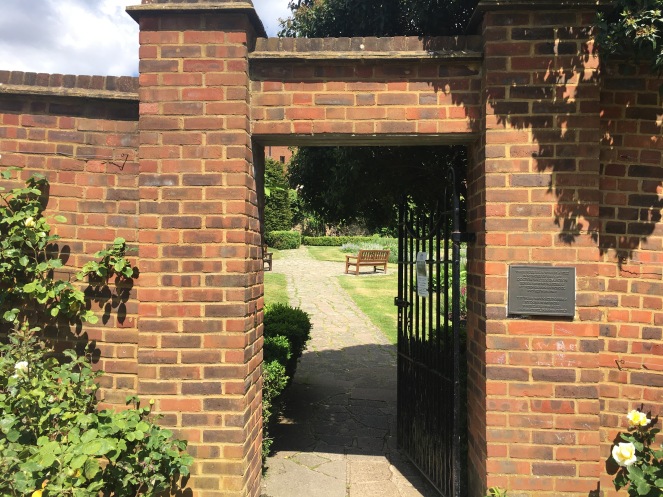







One of the park’s historical landmarks was the Dollis Hill House which was an early 19th century farmhouse located on the northern boundary of Gladstone Park. The house was built in 1825 by the Finch family when the Dollis Hill area was still rural. In 1881 Lord Tweedmouth’s daughter and her husband, Lord Aberdeen, took up residence. They often had Prime Minister William Ewart Gladstone stay as a guest. Other guests at the house included Joseph Chamberlain, Lord Rosebery, and Lord Randolph Churchill, father of Winston Churchill. The Aberdeens moved out in 1897 after Lord Aberdeen was appointed Governor-General of Canada. The Willesden and Urban District Council acquired the house and land in 1899. A notable resident of the house was American author Mark Twain who stayed there in the summer of 1900.

The house would open to the public in 1909 and was used as a hospital during the First World War. In the Second World War, Winston Churchill’s War Cabinet met there in 1941. From 1974 the house was used for training courses for catering students until it closed in 1989. The house was damaged badly in two separate fires in 1995 and 1996 and remained derelict from then onwards before being demolished in 2012 and landscaped as a stabilised ruin. Despite many campaigns to restore the house to its former glory, none have unfortunately come to fruition.
The ruins from the house remain near the pleasure grounds to provide a slight glimpse of what it used to look like. Even though the house hasn’t been resorted, it’s lovely to see that a part of it is still there and is a wonderful legacy to a truly beautiful building which has a lot of history attached to it.


I’ll now leave Gladstone Park and visit my next destination on my walk today, Woodfield Park. Located in Hendon, the park is home to the Brent Reservoir which is commonly known as the Welsh Harp and straddles the boundary between the boroughs of Brent and Barnet, and is owned by the Canal & River Trust.
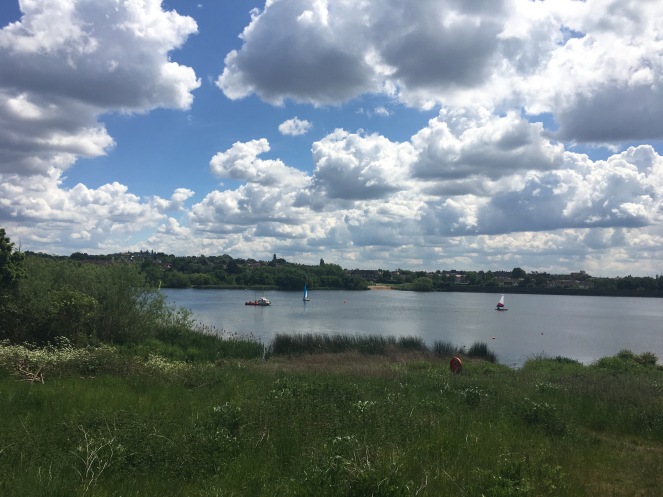

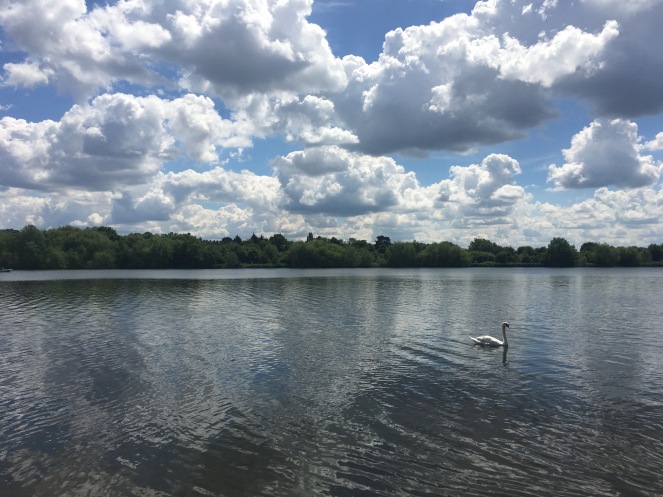
The Welsh Harp name comes from the public house which also had the same name and stood nearby until the early 1970s. The 68.6 hectare (169 acres) area is a site of special scientific interest and is home to the sailing centre, the Welsh Harp Sailing Club, Wembley Sailing Club, the Sea Cadets and the University of London Sailing Club. The reservoir now holds an estimated 1,600,000 m³.



The history of the reservoir dates back to 1820 when there wasn’t enough water to supply the Grand Union Canal and the Regent’s Canal, so having obtained an enabling act of Parliament in 1819, the Regent’s Canal Company decided to dam the River Brent to create a reservoir and cut a feeder channel from it to an upper point on the Grand Union Canal. The reservoir was constructed by contractor William Hoof between 1834 and 1835, with additional extensions to it completed in December 1837. Having explored many watery wonders on my walks, this is the first time I’ve visited a reservoir, so it’s something else I’ve managed tick off my London walking checklist!

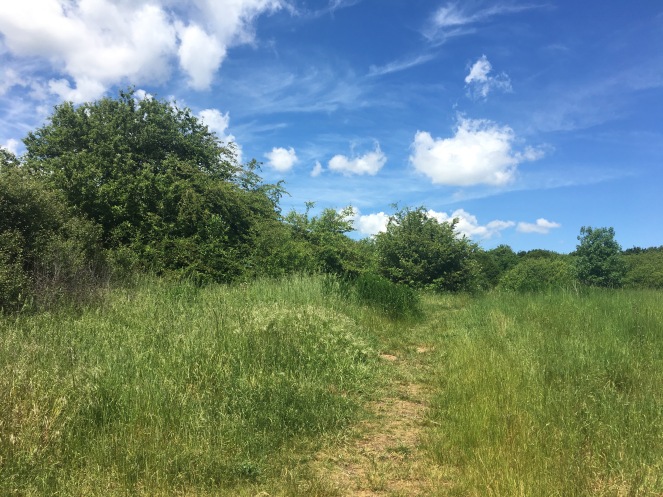


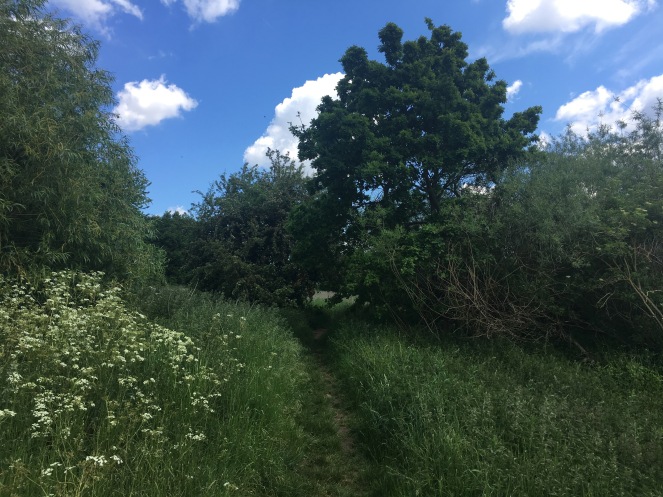
The surrounding area beside the reservoir is called Woodfield Park and contains a wide variety of birds including the great crested grebe, gadwall, shoveler, common pochard, tufted duck and common tern. Also it’s home to 31 species of butterfly, dragonflies and damselflies as well as foxes, squirrels and bats. I really enjoyed walking through the grass, by the trees and under the branches discovering all the parks little treasures. One of the best sights you’ll see when you explore the park is the sun shining through the trees creating mesmerising light and shadow.









It’s time for me to leave Woodfield Park and Brent Reservoir and make the journey to my final location on today’s walk, Fryent Country Park. To get there I pass by the lovely Silver Jubilee Park, which was renamed for the Jubilee of King George V in 1935. The park has a mixture of picturesque trees and sports facilities.


My walk concludes at Fryent Country Park which is 103 hectares (254 acres) of rolling fields and woodland located in the London Borough of Brent. The wood comprises of French oak, hornbeam, elm, ash and fruit trees, and is considered as one of the surviving examples of the Middlesex countryside.

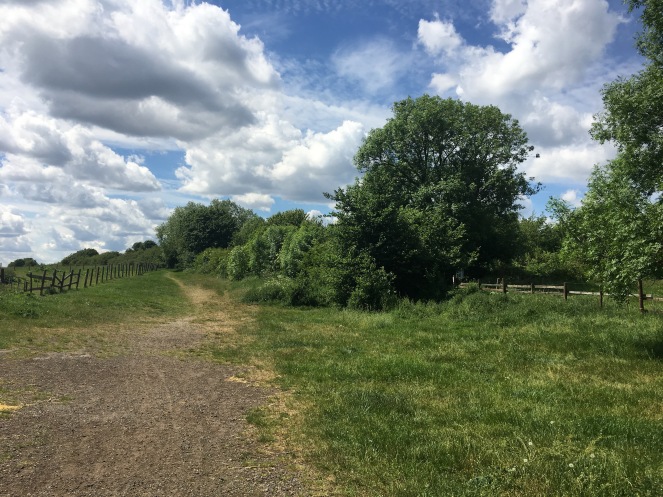

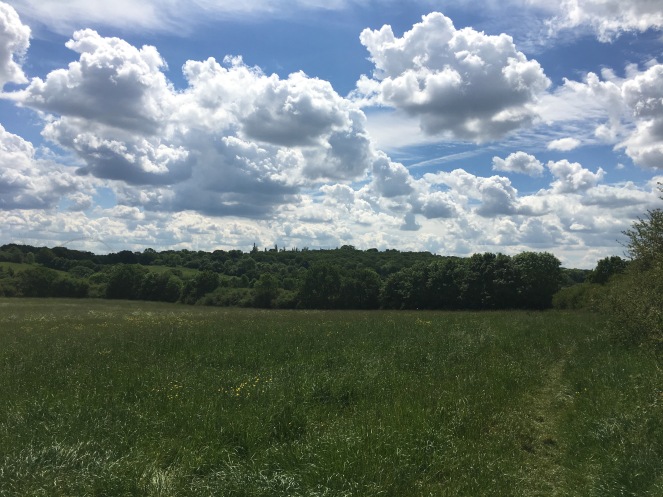

Like with the Brent Reservoir, this is first time I’ve walked through a country park, something you don’t normally expect in London. While you’re walking through the park you get a glimpse of Wembley Stadium in the distance, which provides a true juxtaposition of a quiet natural park with a loud football stadium. When you stand in the middle of the park and look around, taking in a 360 degree view, all you can see is trees and green land, which does make it quite surreal and unique to other places in London.
When you think of London what normally comes to mind is landmarks such as Big Ben, The Shard or Buckingham Palace, and even when you think of the nature in the capital, you might think about Hyde Park or perhaps Hampstead Heath. But what makes exploring London so marvellous is you come across unexpected places like Fryent Country Park, which you wouldn’t have thought could be in London!




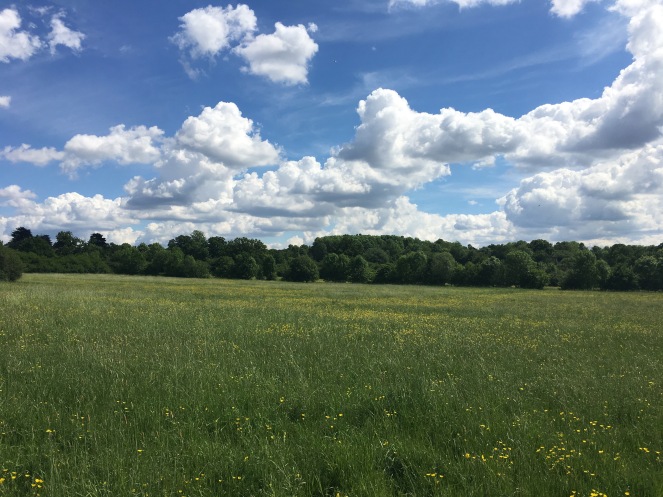
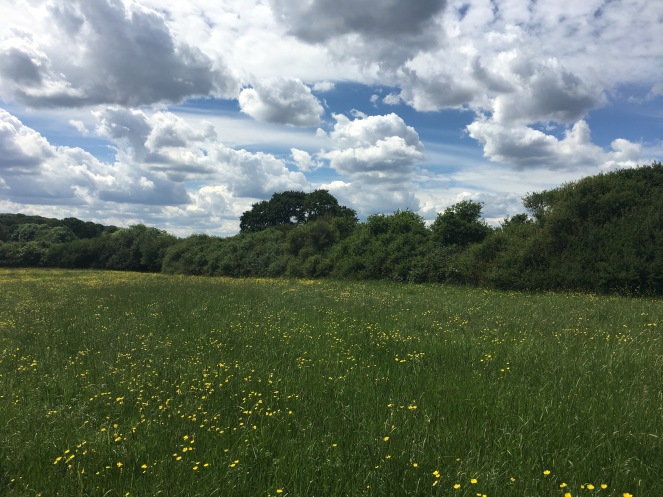


Well that’s all from my walk today which has seen me explore North London’s finest natural wonders from parks to reservoirs and a country park, it has included it all! So if you’re ever wandering around North London seeking some tranquility, there’s plenty to enjoy.
Thanks for reading and in the meantime you can follow all my walks on Facebook, Twitter and Instagram, and don’t forget to sign up to my blog too so you don’t miss a post! Also why not have a read of my other walks which explore all over London, from north to south, to west to east via central, there’s something there for you! 🙂 Here are the links to them all below for you!
King’s Cross to Hampstead Heath
Leadenhall Market to Old Spitalfields Market
St Paul’s Cathedral to Moorgate
Mile End Park to London Fields
Hyde Park Corner to Italian Gardens
Clapham Common to The Albert Bridge
Grosvenor Gardens to Knightsbridge
Holland Park to Meanwhile Gardens
Hackney Downs to Springfield Park
Ravenscourt Park to Wormwood Scrubs
Covent Garden to Southwark Bridge
Putney Bridge to Barnes Common
Westminster Abbey to Vauxhall Bridge
Crystal Palace Park to Dulwich Wood
Clapham Junction to Battersea Bridge
Norbury Park to Tooting Commons
Lesnes Abbey Woods to the Thames Barrier
Richmond Green to Wimbledon Common
Sources:
All photos taken by London Wlogger unless stated © Copyright 2019
Information about Gladstone Park
Information about Dollis Hill House
Information about Brent Reservoir

That is surprisingly rural and unknown walking. thanks for showing it.
Let’s hope that the developers don’t get their hands on any of that green space.
LikeLiked by 1 person
My pleasure 😃 Yeah you don’t normally expect that much green space in London! It should be safe, London is quite good at protecting parks and historical landmarks! 😊
LikeLiked by 1 person
Wow awesome pictures enjoy and have a great time
LikeLiked by 1 person
Aww thank you so much, have a lovely weekend 😃
LikeLike
Welcome same to you too 😊😊😊😊😊😊
LikeLiked by 1 person
Gorgeous! Definitely places I will be looking for if I ever get back to London.
LikeLiked by 1 person
Splendid glad to hear, Irene! It’s a place to explore if you don’t want the hustle and bustle of tourists, and something quieter 😃
LikeLiked by 1 person
Your photos are gorgeous, as always.
LikeLiked by 1 person
Thank you so much, Anne 😊
LikeLiked by 1 person
We’ve never been far beyond the central part of London and your posts make me determined to change that next time we go. There is so much history still to discover.
LikeLiked by 1 person
That’s music to my ears! One of my main aims of the blog is to showcase all the wonderful sights and history outside the touristy areas, which are great, but there’s so much else to see 😃 It even surprises me every time I uncover such picturesque places!
LikeLiked by 1 person
Nice set of park. Thanks for sharing.
LikeLiked by 1 person
They truly are North London gems 😃
LikeLike
Nice content. You are right I didnt know about these parks. I was looking for parks like these when I was there. Thanks for the info, I will have to check them out next time Im in London.
Did you notice any birds? Im a bit of a bird watcher.
LikeLiked by 1 person
Awesome I’m glad to hear! It was mainly ducks haha, but Woodfield Park and Brent Reservoir are home to the great crested grebe, gadwall, shoveler, common pochard, tufted duck and common tern 😊
LikeLike
I had visited London long long back. God willing one day again. Loved the city
LikeLiked by 1 person
That’s awesome, when you visit next you can do all my walks! 😉
LikeLiked by 1 person
😊👍🏾
LikeLiked by 1 person
I knew about some of the central London parks, such as Hyde Park, but also had no idea how many green oases the city offers. It’s wonderful!
LikeLiked by 1 person
You’re so right, there are so many other cute and picturesque parks around which are outside the tourist ones that people don’t normally go to! That’s why I love walking around London, you discover so many other unknown places!
LikeLiked by 1 person
Oooh… Nice sharing! We do have plans to visit London soon. Weel keep this in mind!
LikeLiked by 1 person
Awesome there are plenty of lovely walks to do! 😊
LikeLike
Very well written. Thanks for sharing this information, even local people can learn a lot from it.
LikeLiked by 1 person
Thank you so much 🙂
LikeLike